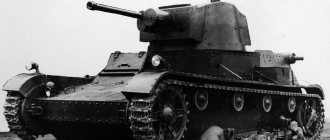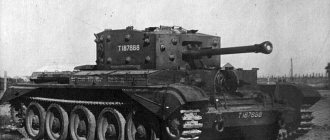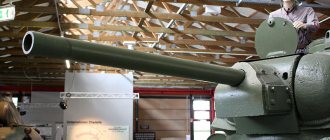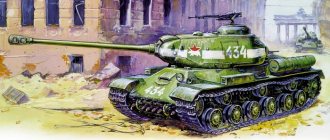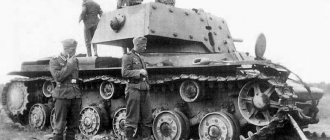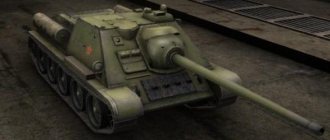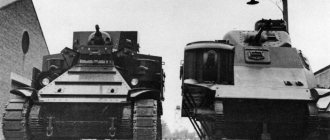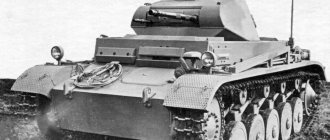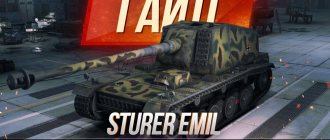Combat use
Combat use
Germany
The LT vz.38 tanks were formally accepted into service, but did not have time to enter the units of the Czechoslovak army - on March 15, 1939, the Czech Republic and Moravia were occupied by German troops. The new customer for these combat vehicles was Hitler’s Wehrmacht, and not by chance. Germany's own tank production lagged far behind the army's needs. For example, the total order for Pz.III medium tanks was 2,538 units, of which 244 were supposed to be delivered to the troops by March 1, 1939. However, the military actually accepted only 45 vehicles! In such a situation, the Germans could not ignore the combat vehicle, mass production of which had almost already begun. And although the LT vz.38 did not meet German standards in everything, one could turn a blind eye to this, because in terms of armament and armor, the light Czechoslovak tank was similar to the average German Pz.III. Therefore, by August 1939, Pz.38(t) was equipped with the 67th tank battalion of the 3rd light division of the Wehrmacht, which on the eve of the Polish campaign was part of the 15th light corps of the 10th field army of Army Group South.
Pz.38(t) Ausf.A tanks during transportation on a Faun L900D567 truck and Sd.Anh trailer. 116. Motorway Breslau - Liegnitz (Wroclaw - Legnica). Silesia, September 1939.
In total, by the beginning of World War II, the VMM company produced 78 Pz.38(t), 57 of them entered the 67th battalion - 55 Pz.38(t) and 2 Pz.Bef.38(t).
The 3rd Light Division operated on the right flank of the 10th Army. Having broken through the Polish defenses in the Czestochowa area, it began to advance in the direction of Koniecpol, where it was attacked by squadrons of the Krakow cavalry brigade. In this battle, which ended disastrously for the Polish cavalry, two Pz.38(t) tanks were knocked out. After crossing the river. Pilica 3rd Light Division took part in the operation to stop the attempted withdrawal of Polish troops from Radom across the Vistula. In the 20th of September, the division was transferred to Modlin, where it met the end of the Polish campaign. During the fighting, seven Pz.38(t) tanks were irretrievably lost.
After the end of hostilities in Poland, all light divisions of the Wehrmacht were reorganized into tank divisions. The 3rd Light Division became the 8th Tank Division, and the 67th Tank Battalion became the 10th Tank Regiment.
According to data given in foreign sources, 15 Pz.38(t) tanks took part in the operation to occupy Denmark and Norway. On the eve of the French campaign (Operation Gelb), Pz.38(t) tanks were available in the 7th and 8th German tank divisions. As of May 10, 1940, the first of them consisted of 34 Pz.I, 68 Pz.II, 91 Pz.38(t), 24 Pz.IV and 8 Pz.Bef.38(t) tanks; in the second - 58 Pz.II, 116 Pz.38(t), 23 Pz.IV and 15 Pz.Bef.38(t).
The 7th Panzer Division, commanded by Major General Erwin Rommel, especially distinguished itself in the battles. After crossing the river. Meuse 7th Panzer defeated the 1st French Armored Division (1.DCR) near Flavion on 15 May. Of course, the light Pz.38(t) Germans were powerless in open battle against the heavy French B Ibis. They won the battle due to superior tactics, maneuver, and the initiative of junior commanders. And, finally, the commander of the German tank division was clearly more talented than his French colleague. Five days later, the 7th Panzer reached the English Channel near Abbeville, cutting off the British Expeditionary Force from its base at Cherbourg.
Light tank Pz.38(t) Ausf.A from the 67th Tank Battalion of the 3rd Light Division. Poland, September 1939.
Pz.38(t) goes through French customs without inspection. May 1940.
On May 22, Rommel's tankers repelled fierce but unsuccessful British counterattacks in the Arras area. The French campaign for the division in Cherbourg ended. As for the 8th Panzer Division, in the battles of Rethel and Chamont its main opponent was the 3rd French Mechanized Division (3.DLM).
During the French campaign, the losses of the 7th and 8th Panzer Divisions in Czechoslovakian combat vehicles amounted to 54 units, of which six tanks were lost forever.
Above: a column of Pz.38(t) tanks from the 7th Panzer Division at a rest stop. France, June 1940. Below: light tank Pz.38(t) Ausf.B from the 10th Tank Regiment of the 8th Panzer Division. France, 1940.
Above: Pz.38(t) tanks of the 8th Panzer Division on one of the streets of Paris. June 1940. In the foreground is a command tank equipped with a loop antenna. Bottom: Pz.38(t) Ausf.A of the 7th Panzer Division in France, May 1940.
In April 1941, Pz.38(t) tanks of the 8th Panzer Division took part in Operation Marita, an attack on Greece and Yugoslavia. The division advanced from the territory of Austria and Hungary and operated mainly in Croatia, whose population greeted the Germans as liberators. The end of the fighting in the Balkans, which followed the capitulation of Greece on April 27, was met by the 8th Panzer in Sarajevo, having lost seven tanks during the operation.
17 German tank divisions took part in Operation Barbarossa. Six of them were armed with Czechoslovak tanks: the 6th tank - Pz.35(t), the rest - Pz.38(t).
The crew of the command tank Pz.Bf.Wg.38(t) Ausf.A cleaning the gun. France, 1940.
Four Panzer Divisions (7th, 12th, 19th and 20th) were part of General Hoth's 3rd Panzer Group (Army Group Center), the 8th Panzer Division operated as part of General Hoepner's 4th Panzer Group (Army Group " North").
The 3rd Panzer Group delivered the main blow to units of the 126th and 128th Soviet Rifle Divisions stationed along the border. The German troops in this sector had a manifold superiority in men and an absolute superiority in tanks. Therefore, on the very first day, the Soviet rifle divisions, without having time to turn around, were crushed and began to retreat to the northeast. German tanks captured bridges across the Neman and on the afternoon of June 22 rushed to the city of Alytus.
In this direction, the 5th Tank Division of the 3rd Mechanized Corps of the Red Army gave a worthy rebuff to German units on the first day of the war. On the afternoon of June 22, the 7th German Panzer Division approached Alytus, on the eastern outskirts of which the division was occupying defenses. An oncoming tank battle unfolded on the right bank of the Neman. On the Soviet side, a significant number of T-34 and T-28 medium tanks took part in it. Most of the latter, however, were very worn out and for this reason were used for firing from the spot. However, the German offensive could not be stopped. The 5th Tank suffered heavy losses, there was not enough fuel and ammunition, communication between units and subunits was disrupted, which began to retreat to Vilnius at night.
Combat composition of German tank divisions armed with Pz.38(t) tanks on June 22, 1941
The oncoming tank battle near Alytus on June 22, 1941 was the first clash of this kind in the Great Patriotic War. The command of the German 3rd Panzer Group, in its report to the headquarters of Army Group Center, gave this battle the following description: “On the evening of June 22, the 7th Panzer Division fought the largest tank battle of the war east of Olith (as in the German document - Approx. auto
) against the 5th Panzer Division. 70 enemy tanks and 20 aircraft (at the airfield) were destroyed. We lost 11 tanks."
Above: The March to the East has begun! A column of Pz.38(t) tanks from the 7th Panzer Division of the Wehrmacht is moving across Soviet soil. June 1941. Below: Pz.38(t) Ausf.F on the street of a Belarusian village. Judging by the tactical badge next to the cross, this vehicle also belongs to the 7th Panzer Division. Beginning of July 1941.
It should be noted that in this report the Germans indicated only their irretrievable losses, while the Soviet side indicated their total losses. Considering that for every irretrievably lost tank there are three or four destroyed, it can be argued that the total losses of the 7th Panzer Division amounted to 40–50 combat vehicles. However, the battlefield remained with the German troops, and therefore they had the opportunity to repair most of the damaged tanks and put them back into service. Our damaged vehicles, captured by the enemy, automatically fell into the category of irretrievable losses.
Pz.38(t) Ausf.F stuck in a crater. 7th Panzer Division, July 1941.
Despite heavy losses, Soviet troops offered fierce resistance to the enemy. This can be judged by the following facts. As of September 10, 1941, 62 Pz.38(t) tanks remained in service with the 7th German Tank Division, with irretrievable losses amounting to 59 vehicles. On the same date, the 8th Tank Division had 78 combat-ready Pz.38(t) (20 tanks were irretrievably lost). In the 12th Panzer Division, 42 Pz.38(t) remained in service on August 26 (47 vehicles of this type were destroyed). As of August 25, the 19th Tank had 57 serviceable Pz.38(t) in service (irretrievable losses - 21 tanks), and the 20th Tank had 52 (irretrievable losses - 37 tanks). And all these named loss figures are for only one type of combat vehicle!
Nevertheless, the 3rd Panzer Group continued to advance deeper into Soviet territory. Through Rzhev, Kalinin and Klin, its tanks advanced on Moscow, covering the capital from the north.
Tank Pz.38(t) Ausf.G drives into the gates of a Soviet military unit. On the banner between the portraits of Stalin and Timoshenko there is the inscription: “Long live our dear Red Army - a mighty stronghold of the peaceful labor of the peoples of the USSR.” 1941
Red Army soldiers inspect a damaged Pz.38(t) Ausf.G tank from the 20th Tank Division. Noteworthy is the cannon barrel of an enemy tank, pierced by a Soviet shell! Western Front, July 1941.
At the end of November 1941, units of the 56th Tank Corps (6th and 7th Tank and 14th Motorized Divisions), striking a weak point in the defense of the Soviet troops - the junction between the 30th and 16th armies, reached Moscow-Volga channel. On the night of November 28, the combat group under the command of Colonel Manteuffel (6th Infantry and 25th Tank Regiments) captured the bridge in Yakhroma, secured a foothold on the right bank of the canal and began advancing towards Dmitrov, where the army headquarters were located. Commander of the 1st Shock Army, Lieutenant General V.I. Kuznetsov threw against the breaking through German tanks the only real force at his disposal at that moment - armored train No. 73 of the NKVD troops for the protection of railways. The armored train included an armored steam locomotive and two D-2 motorized armored cars, each armed with two 76-mm cannons. Having reached the bridge, the armored train opened fire. Three Pz.38(t) tanks immediately caught fire, the rest opened direct fire. For more successful maneuvering and increasing the firing sector, the commander of the armored train, Captain F.D. Malyshev ordered one motorized armored car to be unhooked and taken to a parallel track. Now the German tankers had to fire at two targets. They managed to knock out an armored locomotive, and one motorized armored car was forced to retreat to Dmitrov.
Pz.38(t) Ausf.A (or Ausf.B of early releases), knocked out by Soviet troops in Belarus, 1941. This vehicle is distinguished by a Czechoslovakian type antenna input and an early type sight recess with one hole.
Turret of the Pz.38(t) Ausf.A tank.
After quick repairs, he returned to the battlefield, which continued until dark. The Germans lost 12 tanks, 24 vehicles and at least 700 soldiers and officers in this battle. On November 29, a counterattack by the 123rd and 133rd separate tank battalions, the 29th and 44th rifle brigades, with the support of artillery, managed to push the Germans back to the western bank of the canal. On November 30, having exhausted its offensive potential, the enemy in this sector went on the defensive.
According to the recollections of the Germans, even the weather in those days was favorable to the Russians. On the afternoon of November 27, the temperature dropped to 40° below zero in just two hours. The winter equipment of Manteuffel's soldiers and officers at that time consisted only of knitted woolen helmets worn under a helmet, light and short overcoats and narrow boots. It would be impossible to fight in such clothes in forty-degree frost. It should be noted that in the winter of 1941/42, up to 40% of German soldiers on the front line suffered from frostbite on their feet.
But the frost disabled not only the soldiers, but also the equipment. Oil froze in the engines, carbines, machine guns and machine guns refused to fire, tank engines would not start. Is it any wonder, the Germans complain, that in this situation, Manteuffel’s battle group, despite all efforts, failed to hold the Yakhroma bridgehead when soldiers of the Soviet 1st Shock Army, dressed in winter overcoats and felt boots, attacked it. The barrels of Russian machine guns peeked out from their fur covers, and the bolts of machine guns were greased with winter oil. Nothing stopped the Russians from fighting. If necessary, they could lie in the snow for hours, secretly crawl up to German outposts and destroy them. The infantry was supported by T-34s, while the 25th Tank Regiment of the 7th Tank Division had only Pz.38(t) with 37 mm guns and several Pz.IV with 75 mm guns at its disposal.
Command tank Pz.Bf.Wg.38(t) of the company-battalion link. Summer 1941. The gun barrel was apparently knocked off by a shell. A flag with a swastika stretched across the armor made it easier for German aircraft to identify the vehicles.
During December 1, the 1st Shock Army crossed the canal, drove the enemy back from the west bank and captured a bridgehead southwest of Yakhroma. Over the next four days, Soviet troops fought oncoming battles with German units here. As a result of these battles, the troops of the 1st Shock Army inflicted serious losses on the German units, finally thwarting their attempts to reach the eastern bank of the Moscow Canal. During these days, the 7th Panzer Division lost almost all of its Pz.38(t) and was later rearmed with German-made tanks. The total losses of the Wehrmacht in Pz.38(t) tanks in 1941 amounted to 796 units.
At the beginning of 1942, the newly formed 22nd Panzer Division had the largest number of tanks of this type. Her baptism of fire took place in March 1942 during an attack on the positions of Soviet troops on the Kerch Peninsula. In the morning fog, units of the division collided with Soviet units preparing to attack, became mixed up and suffered heavy losses. She had the opportunity to rehabilitate herself in early May 1942 during the operation carried out by von Manstein’s 11th Army to eliminate the Soviet bridgehead on the Kerch Peninsula. On the night of May 8, German infantry launched an assault on the positions of the 44th Army of the Crimean Front. Together with troops landed from assault boats, the infantrymen managed to capture the first line of defense of the Soviet troops and, which was their main task, an anti-tank ditch 10 m wide, stretching along the entire front line.
Pz.38(t) tanks abandoned during the retreat. Tikhvin area, December 1941.
In the book of military historian Paul Karel “Eastern Front”, further events are described as follows: “Tank companies and armored personnel carriers, quickly turning around, struck the second and third lines of Soviet defense, broke enemy resistance, reached the turn of the road to Arma-Eli and fell straight on area of concentration of the Soviet tank brigade.
Captured German tanks on display at the Central Museum of the Red Army. February 1942. In the foreground is a Pz.38(t).
As planned, the 22nd Panzer Division now turned north, behind the two Soviet armies that were still fighting the 46th Infantry Division and the Romanian brigades. Everything went according to Manstein's plan. But then suddenly the situation changed. Towards the evening of May 9, heavy rain began. Within a few hours, the dirt roads and clay soil along the roadsides turned into an impassable quagmire. Wheeled all-terrain vehicles and trucks were hopelessly stuck in it; only tracked vehicles retained the ability to move. Manstein's will collided with the forces of nature.
The armored fighting vehicles of the 22nd Panzer Division continued their advance until late at night, and then took up positions for all-round defense. When the dawn of a new day broke, May 10, they were already deep in the rear of the Soviet 51st Army. The Germans repelled a powerful enemy attack with the involvement of large formations of armored vehicles. The rising wind soon dried up the land. The division continued moving north. On May 11, she was in Ak-Monai by the sea and, therefore, in the rear of the Soviet 47th Army.”
By the beginning of the German summer offensive, in addition to the 22nd Panzer Division, Pz.38(t) tanks were available in six more Wehrmacht formations.
As for the 22nd Panzer Division, in the fall of 1942 it was part of the 48th Panzer Corps of General Hoth's 4th Panzer Army.
In September, the corps was temporarily withdrawn from the army and transferred to the area south of the city of Serafimovich, to the rear of the 3rd Romanian Army. The 22nd Division, which formed the basis of the corps' forces (in addition to it, the corps included the 1st Romanian Tank Division), despite the order of the command of the ground forces, had not yet been rearmed with German tanks to replace the Czechoslovak Pz.38(t). The condition of the division, which occupied positions on a quiet sector of the front, was quite deplorable. The equipment of her 204th Tank Regiment was hidden in deep trenches and protected from frost by straw. The tankers did not receive fuel, and therefore could not check the engines. When the order to advance to the front line was received and the tanks had to be hastily withdrawn from the trenches, only 39 out of 104 vehicles were able to start the engines, and even then with difficulty. On the march, tanks often broke down due to electrical equipment failure. As it turned out, the mice that had infested the straw simply ate part of the electrical wires.
Combat composition of tank formations armed with Pz.38(t) (at the end of June - beginning of July 1942)
As a result, the division reached its original positions with 31 combat vehicles. Later, 11 more joined. From these forces, a battle group was formed, which on November 19, 1942, on the first day of the Soviet counteroffensive near Stalingrad, in the Peschany area, was drawn into stubborn battles with the 1st Tank Corps of the Red Army. As the 22nd Division's neighbors to the left and right - the Romanian infantry divisions - were rapidly retreating, the tankers were in danger of being encircled, and they too were forced to retreat across the Chir River.
Repair of a captured Pz.38(t) tank at one of the Soviet factories. 1942 (top). Captured Pz.38(f) tanks, after repairs and replacement of machine gun armament with domestic ones, were actively used by units of the Red Army. In the photo below, a train with captured tanks is heading to the front. August 1942.
Here, from scattered Romanian and German units, the new chief of staff of the 3rd Romanian Army, Colonel Wenck, created a front designed to close the 200-kilometer gap created by the Soviet offensive. This is what Wenck himself recalled on this occasion: “I reported my arrival to Colonel General Dumitrescu. With the help of an interpreter, I was familiarized with the situation. She looked completely hopeless. The next morning I flew to the front in the Chir bend on the Fisiler Storch. There is little left of the Romanian units there. Somewhere west of Kletskaya, on the Don, parts of the brave group of Lascaria were still holding out. The rest of our allies ran away without looking back. With the means at our disposal we could not stop the retreat. Therefore, I had to rely on the remnants of the 48th Panzer Corps, on parts of the Luftwaffe, on the rear units of the 6th Army, which were assembled into battle groups by energetic officers, and on the soldiers of the 6th and 4th Panzer Armies, who were gradually returning from leave. At first, the troops along the Don-Chir arc in a sector of several hundred kilometers consisted of only a few combat groups, from combined formations assembled anywhere, cobbled together from the rear services and repairmen of the 6th Army, as well as from tank crews and tank companies without tanks, from sappers and air defense troops. They were later joined by the main forces of the 48th Tank Corps, which made their way to the southwest on November 26. But I could not establish contact with Lieutenant General Geim's tank corps until the 22nd Panzer Division had fought its way to the southern bank of the Chir. The battle group of this division stood as a strong rock in the battles on the Don and Chir.
Red Army soldiers inspect a Pz.Bef.Wg.38(t) command tank abandoned by the Germans with a wooden model - an imitation of a cannon. 1942
A Soviet soldier inspects a German light tank Pz.38(t) Ausf.B, overturned by an explosion of an aerial bomb. Volkhov Front, Sinyavino region, 1942 (above). Pz.38(t) Ausf.C from the 22nd Panzer Division. Crimea, spring 1942. Noteworthy is the non-standard equipment box at the rear of the turret (below).
With her lightning-fast counterattacks during those difficult weeks, she earned herself a high reputation among the infantry, becoming a true legend. Of course, after a few days, only six tanks, twelve armored personnel carriers and one 88-mm anti-aircraft gun remained in the group. The group commander, Colonel von Oppeln-Bronikowski, sat in his Pz.38(t) tank, directing the actions of his unit from the very front in cavalry style. This tank group acted like a fire brigade on Chir.”
From the above excerpt it is clear that even the remnants of the defeated German formations, equipped with far from the most modern tanks, due to the high level of combat training and traditional discipline for the German army, represented an impressive force.
As for the Pz.38(t) tanks, in the spring of 1943 they were practically withdrawn from the combat tank units of the Eastern Front. So, before the start of the Battle of Kursk, they were available only in the 8th and 20th tank divisions - three and nine units, respectively. In total, as of July 1, 1943, the Wehrmacht had 204 combat-ready tanks of this type.
By this time, some of the vehicles had been converted into self-propelled artillery units during repairs. Tank towers were used on various fortifications as firing points. By the summer of 1944 there were 351 of them. A significant number of Pz.38(t) tanks served in security and police formations in the occupied territories, as well as as part of German armored trains. As of October 1944 (statistics on the Pz.38(t) end this month), there were another 229 combat vehicles of this type in the Wehrmacht.
A column of Pz.38(t) tanks of the 22nd Tank Division is moving to its original positions. Crimea, May 1942.
Slovakia
From the spring of 1940 to the beginning of 1941, the Slovak army received 37 Pz.38(t) Ausf.S tanks. All of them became part of the Mobile Brigade, the only motorized unit of the Slovak army that took part in Operation Barbarossa. During the summer battles of 1941, two Pz.38(t) tanks, which received the Slovak designation LT-38, were lost. The brigade was returned to Slovakia and later a division was formed at its base.
The Slovak security division, which fought against partisans in Ukraine, received a company of five LT-38s in April 1943. These tanks did not take part in battles, but were used mainly to guard the division headquarters.
A mixed company of six LT-38s and six LT-40s as part of the Mobile Division arrived in the North Caucasus in October 1942. During the Soviet offensive in the spring of 1943 and the subsequent evacuation of German and Slovak troops to Crimea, almost all of these tanks were lost.
The Slovaks ordered the next batch of 58 units in June 1943. However, the Germans gave them only 37 tanks of various modifications, apparently from those undergoing repairs. These vehicles were located on the territory of Slovakia and first went into battle only in August 1944, when the Slovak National Uprising began. True, they had already fought with German troops and almost all of them were destroyed.
Tower front plate.
Romania
The only large batch of Pz.38(t) tanks - 50 units - was delivered to Romania in 1943 as part of a program to replace losses suffered by Romanian tank units at Stalingrad. However, the most combat-ready tank formation of the Romanian army - the Greater Romania division - was equipped mainly with German-made armored vehicles.
On the basis of the Pz.38(t) tank, Romania developed the TASAM T38 anti-tank self-propelled gun, equipped with a captured Soviet ZIS-Z cannon. Structurally, it was similar to the German self-propelled gun "Marder". Due to the lack of a sufficient number of guns, the construction program for these vehicles was not implemented.
Red Army soldiers inspect a captured German tank Pz.38(t) Ausf.F from the 22nd Tank Division. The area northwest of Stalingrad, 1942.
Bulgaria
The Bulgarian army received Pz.38(t) tanks from September 1943 to February 1944, when the most massive deliveries of German equipment occurred. Among other combat vehicles there were 10 Pz.38(t). Subsequently, they took part in counter-guerrilla operations in Macedonia. The Germans hoped that the Bulgarians would send their troops to the Eastern Front, but Tsar Boris III refused. Soon after his death, the country's pro-German government was overthrown by the Fatherland Front. On September 11, 1944, Bulgaria declared war on Germany.
Pz.38(t) Ausf.S tanks of the Slovak army during tactical training.
From September 15, 1944, the only Bulgarian tank brigade took part in combat operations against German forces in Serbia. At the same time, the main striking force was modern German-made equipment - Pz.IV tanks and StuG III assault guns. As for the Pz.38(t), by March 1945 there were only three serviceable combat vehicles of this type left in the brigade.
It should be noted that Pz.38(t) were operated in Bulgaria for some time after the end of World War II. Thus, as of the beginning of 1946, the 1st Tank Brigade, in addition to German combat vehicles, had 49 Italian, Czechoslovak and French light tanks, including several Pz.38(t), for which spare ones were even purchased from the CKD plant parts. Only in the early 1950s were the Bulgarian tank forces completely re-equipped with Soviet-made armored vehicles.
Pz.38(t) from the 9th company of the Bulgarian tank brigade at the parade in Sofia. Autumn 1944.
Hungary
In October 1941, the 1st Armored Division was formed in Hungary. When she went to the Eastern Front in 1942, her 30th Tank Regiment, along with 19 Hungarian Toldi tanks, had 89 Pz.38(t) tanks. In total, Hungary received from Germany 111 combat vehicles of this type - 105 linear tanks and six command tanks. Most of them met a sad end - the 1st Armored, which fell under the moloch of the Soviet offensive at Stalingrad, was completely destroyed.
Subsequently, there were no large units armed with Pz.38(t) tanks in the Hungarian army. It is reliably known that several vehicles were in service with the armored cavalry battalion of the 1st Hungarian Cavalry Division, which took part in heavy fighting in Eastern Poland in the summer of 1944. Having lost all its tanks, it was withdrawn to Hungary in September.
Damaged and abandoned by the crew of the Pz.38(t) from the 54th Romanian tank company. Crimea, 1944.
* * *
Only four tanks of this type have survived to this day. Restored several years ago to running condition, the Pz.38(t) Ausf.A with serial chassis number 008 is today an exhibit at the Military Museum in Prague. The Pz.38(t) Ausf.S tank is in the Museum of the Slovak National Uprising in Banska Bystrica in Slovakia. Two vehicles of modification G have been preserved in Russia: one in the Military Historical Museum of Armored Weapons and Equipment in Kubinka (this machine is running!), the other in the Central Museum of the Great Patriotic War in Moscow on Poklonnaya Hill.
Pz.38(t) on the armored platform of a German armored train. In this role, combat vehicles of this type were used until the end of the war.
Advantages and disadvantages
This brainchild of brilliant German tank builders has good combat potential, but for you to be able to fully realize it, knowledge of the general characteristics and parameters of weapons may not be enough. To complete the picture, it is worth highlighting the most important strengths and weaknesses of the Pz.Kpfw. 38 (t) World of Tanks
, which is what we will do. Pros: • Small silhouette and decent camouflage; • Excellent damage per minute; • Good penetration indicators; • Pleasant accuracy (spread and convergence); • Comfortable vertical aiming angles. Cons: • Weak armor; • Mediocre mobility for LT-3; • High probability of engine damage; • Small one-time damage.
Equipment for Pz.Kpfw. 38(t)
By selecting and installing additional modules, the player can enhance the existing advantages of his tank, as well as neutralize its disadvantages. However, at the third level there are few options in this aspect, some of them we do not need at all, so for the Pz.Kpfw. 38 (t) equipment
should be placed wisely, and the set looks like this: 1. – allows you to comprehensively improve such indicators as damage per minute, aiming speed and visibility, all this is important in battle. 2. – will give us the opportunity to get a really good overview, which in turn will give us a significant advantage over the enemy. 3. – goes well with the previous point and increases our survivability by improving camouflage.
Another possible and good option from the point of view of need could be, but their installation makes no sense, since our mixing speed is already excellent, so the above three points can be considered the most popular.
Crew training
You all understand perfectly well that the process of pumping up tankers sitting in a tank requires an even more serious approach, because mistakes in this aspect are fraught with serious waste of the most precious resource - time. Although our crew is not entirely standard, it consists of 4 people, this frees up our hands somewhat, so for the LT vz. 38 perks
It is better to study in the following order: • Commander (gunner) – , , , . • Driver mechanic - , , , . • Radio operator – , , , . • Charger – , , , .

